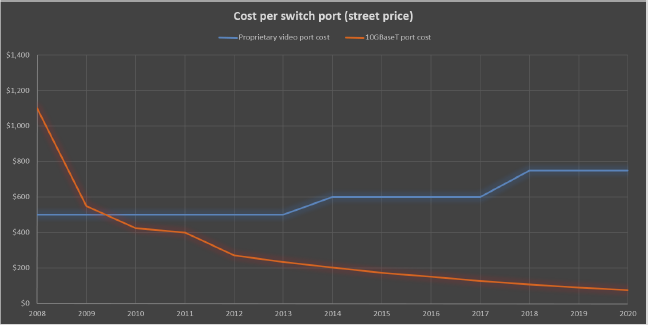
Justin Kennington is from Aptovision and he talked about transmitting and switching video over IP. Aptovision has chips to put HDMI over ethernet networks and we covered this in some detail in our ISE report. (Aptovision Developing Plethora 10Gb End-Point Chip)
He started by drawing an analogy with phones. Phones used to use dedicated wires to connect users while networks use packets of data. Circuit switching, such as the old systems, did have some advantages, such as dedicated bandwidth, low overheads and no timing uncertainty. However, switcher chips are hard to expand as you have to make clear decisions on how many inputs and outputs you want at design time and you have to have dedicated switches per data type.
Ethernet has been around 40 years – it is one of the oldest surviving IT technologies and broadcast is already switching to using 10G ethernet, but life is simpler in a broadcast facility. It is typically a very controlled environment and there is no need to worry about copy protection.
Kennington highlighted that network switches are very flexible – outputs and inputs can be flexibly assigned. Costs have not declined in A/V switching, but network costs just go down continually. Every enterprise has a managed ethernet network already. In addition trunk ports in 10G switches allow easy scaling.
In ProAV, latency is often unacceptable, and compression may not be used. That means you can’t codecs such as H.265.
10G switches are available at $100 per port, while you can spend $1,000 per port for matrix switches. And Moore’s Law is pushing network prices down. Aptovision has developed adaptive clock re-synchronisation to allow ‘zero latency’ distribution.
Kennington made the prediction that in five years matrix switches will be dead.


